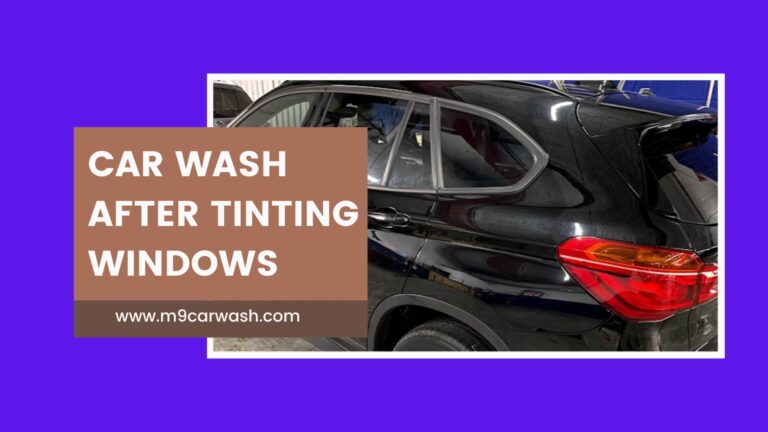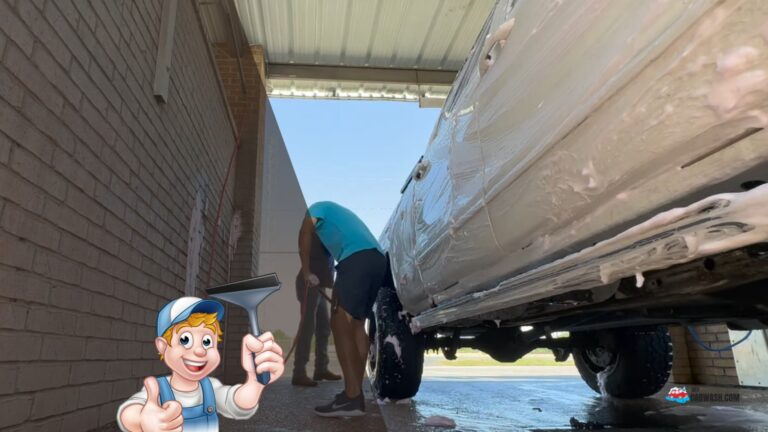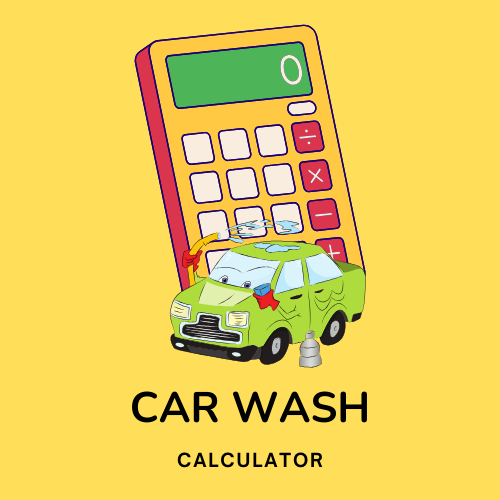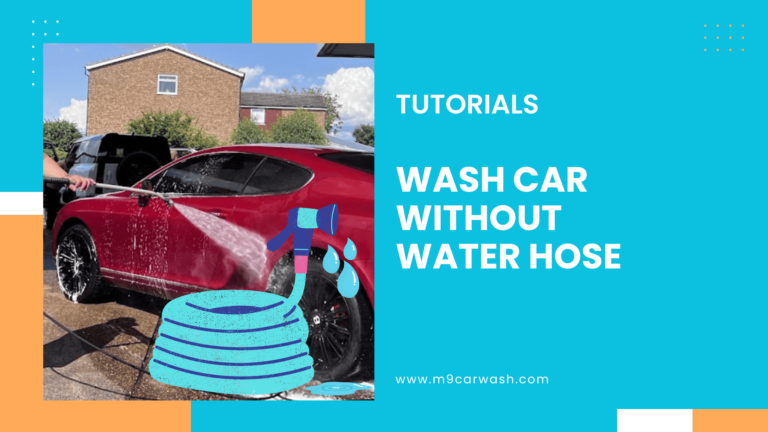When washing a car, selecting the correct pressure washer nozzle is important for achieving a clean without causing damage.
The 0-degree and 15-degree nozzles can damage paint due to their high pressure. It’s better to stick with a 25-degree or 40-degree nozzle to protect the car’s finish.
Different nozzles offer varying spray patterns and pressure levels, which directly affect how well I can clean certain surfaces.
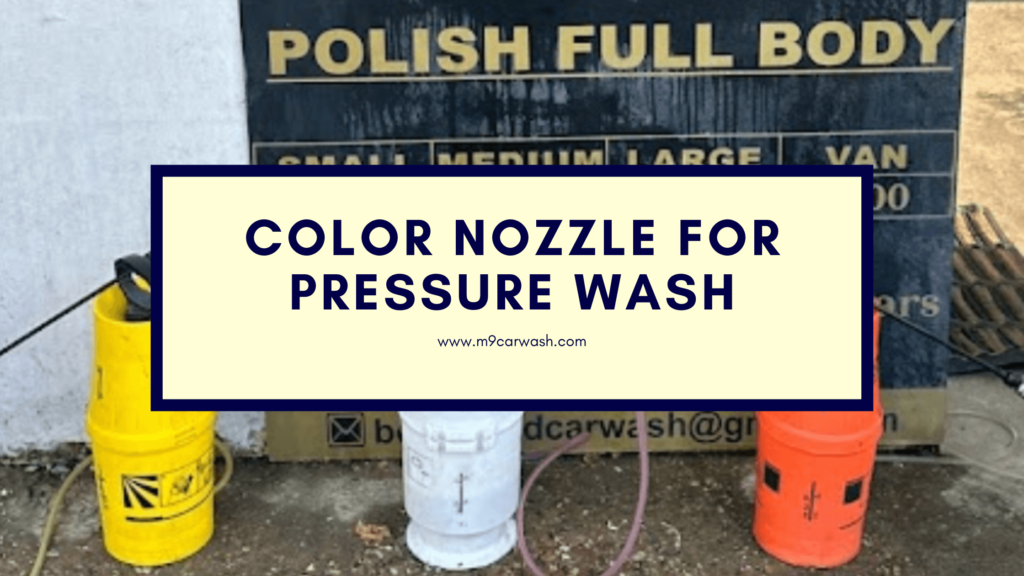
Nozzle Types and Their Uses
Pressure washer nozzles come in different colors, each indicating a specific spray pattern and pressure level.
- Red (0 degrees): This nozzle offers a narrow, concentrated spray. It’s powerful but can damage paint, so I usually avoid using it on cars.
- Yellow (15 degrees): Good for stripping away tough dirt, but still, I would recommend using it with caution.
- Green (25 degrees): A versatile option suitable for cars. It balances pressure and width for general cleaning.
- White (40 degrees): Wide spray that’s gentle enough for rinsing.
- Black (soap nozzle): Use only for applying soap and also great for pre-wash treatment.
Matching Nozzle Types to Cleaning Tasks
Not all cleaning tasks are the same, and the nozzle I choose should fit the job.
- For basic dirt removal, I find that the green nozzle (25 degrees) works perfectly. It removes dirt without risking scratches.
- Stubborn stains, the yellow nozzle (15 degrees) will do the job but only from a distance to avoid damage.
- A gentle rinse is best done with the white nozzle (40 degrees), and I always finish with the black (soap nozzle) to apply a foaming car wash product.
Personally, for me, this combination usually helps efficiently tackle different cleaning needs.
Safe Pressure Level for Car Surfaces
Using the right pressure level is crucial for protecting my car’s exterior.
Look for a pressure washer that operates between 1,500 and 2,500 PSI for safe car washing.
Anything higher pressure can risk damaging paint or plastic components.
Electric pressure washers typically fall within this range, while gas models can reach higher pressures.
However, I usually adjust the nozzle to keep the pressure in check.
Prep Your Vehicle for Effective Cleaning
Before you start pressure washing, take a few moments to prepare your vehicle.
- First, gather the supplies: a pressure washer, appropriate nozzles, a bucket, and car-safe soap.
- Rinse the car with water to remove loose dirt and debris. This step prevents scratches during washing. Also, make sure to cover areas like windows and sensitive parts with towels or plastic to protect them from potential damage.
- Finally, using a soap presoak can loosen up any tough grime.
Mix the soap in a bucket for easier application, ensuring every inch of the car is covered while avoiding the wheels first, as they often need special attention later.
As I mentioned above, it’s essential to choose the right nozzle color, like the green or white ones, which are safe for washing without damaging the paint.
Best Practices for Pressure Washing
- Focus on the angle and distance of the spray.
- Keep the nozzle at least 2-3 feet away from the surface helps prevent damage to the paint. I use a 25-degree nozzle for the best balance of power and coverage.
- Start washing from the top down, allowing the soap to flow down and gather dirt as it goes. After scrubbing the vehicle lightly, rinse everything off thoroughly. Using the same distance while rinsing helps ensure even coverage.
For the wheels, I usually switch to a more concentrated nozzle to tackle the grime effectively.
Now, Remember to use soap again if they are particularly dirty. If not, just leave it.
Attachment and Equipment Know-How
When washing your car, it’s essential to choose the right attachments and equipment. Proper nozzle selection and maintenance can make a significant difference in the effectiveness of the cleaning task. Here’s what you need to know.
Nozzle Maintenance and Material Considerations
- Check for clogs or damage before each use. A dirty nozzle can reduce water pressure, making it less effective for cleaning tasks.
- Using nozzles made from durable materials like brass or stainless steel can enhance longevity.
Different nozzles serve specific purposes.
For delicate surfaces like your car’s paint, a 65-degree nozzle or a foam cannon with low PSI (pressure per square inch) works best.
Using a foam cannon allows soap to spread evenly, providing extra cleaning without harsh scrubbing.
Regularly clean and inspect your nozzles to ensure they remain functional, which helps maintain a consistent water spray.
Use a foam cannon to add a rich layer of soap, which helps lift dirt from surfaces.
With a pressure of around 2000-3000 psi, these tools work efficiently together.
What pressure washer nozzle is best suited for washing vehicles?
For washing vehicles, the 40-degree nozzle is generally the best choice. It provides a wide spray pattern that safely cleans surfaces without causing damage.
The 25-degree nozzle can also be effective, especially for tougher spots like wheel wells.
Best Angle of a pressure washer nozzle affect car washing
A wider angle, like the 40-degree, disperses water over a larger area, making it safer for paint.
Narrower angles provide more concentrated cleaning power but may risk damaging surfaces.
What do the colors of pressure washer nozzles represent?
Pressure washer nozzles are color-coded by their spray angles. They are typically:
- 0-degree (red): Very concentrated, risky for car paint
- 15-degree (yellow): More powerful for tough stains
- 25-degree (green): A good balance for moderate cleaning
- 40-degree (white): Wide spray, safest for vehicles
Are there specific pressure washer nozzle tips recommended for vehicle cleaning?
Yes, the 25-degree and 40-degree nozzle tips are recommended for vehicle cleaning.
They effectively remove dirt and grime while being safe for car surfaces.
My personal expert advice would be always avoid using the higher-pressure nozzles for washing cars to prevent damage.

